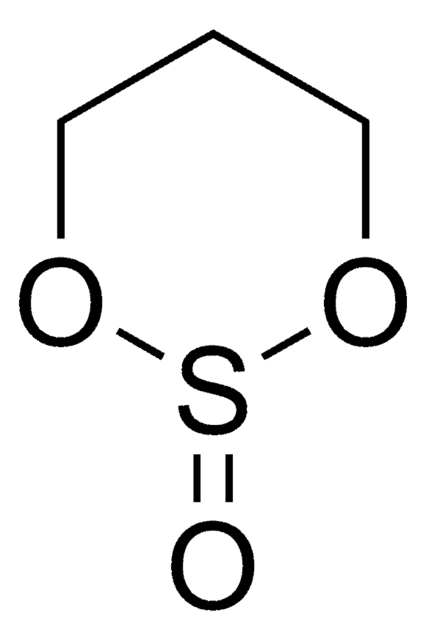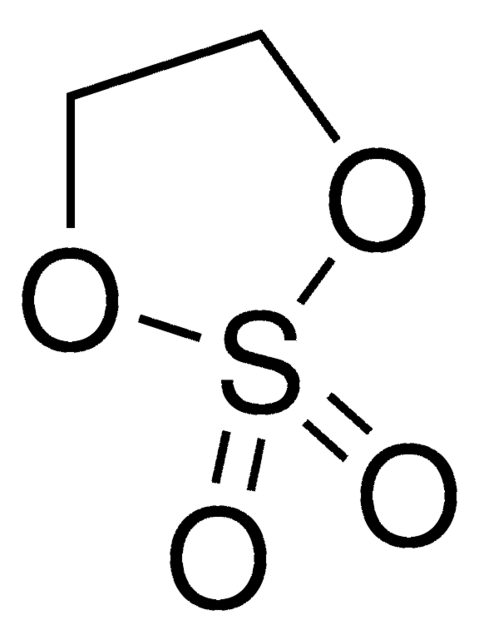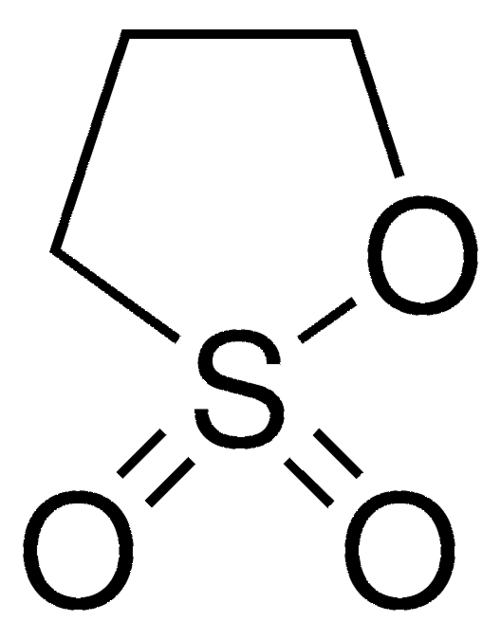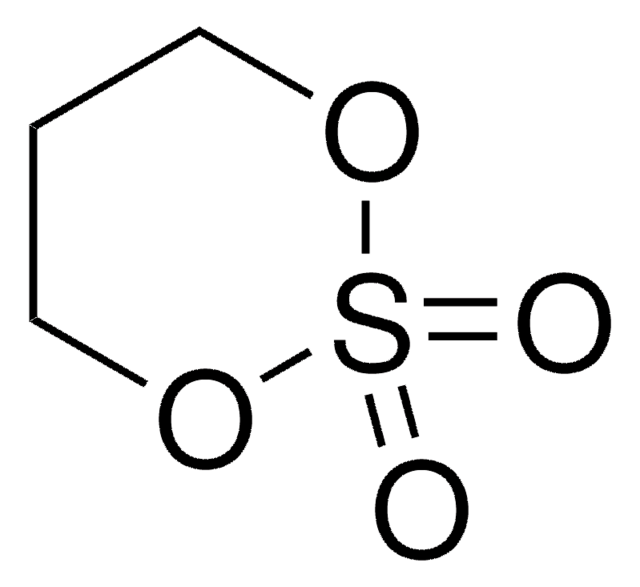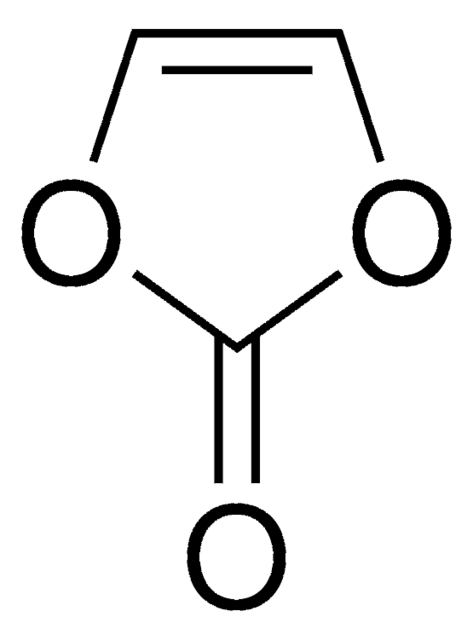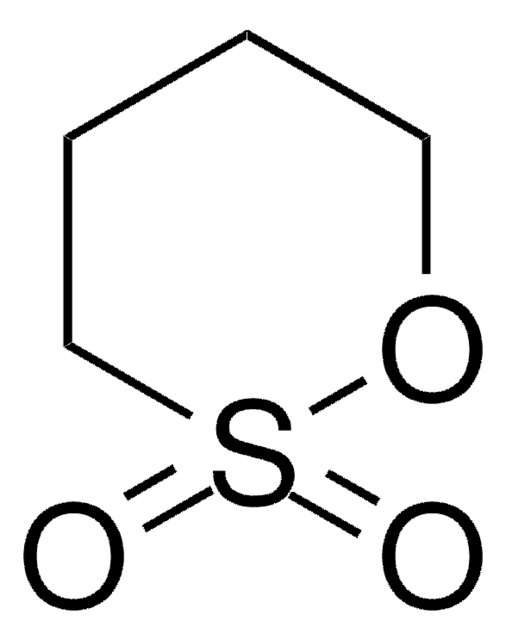774456
1,2-Propyleneglycol sulfite
≥98%
Synonyme(s) :
1,2-Propanediol cyclic sulfite, 4-Methyl-2-oxo-1,3,2-dioxathiolane, 4-Methyl-[1,3,2]dioxathiolane 2-oxide, PS, Propylene sulfite
About This Item
Produits recommandés
Niveau de qualité
Essai
≥98%
Forme
liquid
Caractéristiques du produit alternatif plus écologique
Design for Energy Efficiency
Learn more about the Principles of Green Chemistry.
sustainability
Greener Alternative Product
Indice de réfraction
n20/D 1.437
pb
174-178 °C/760 mmHg
Densité
1.293 at 25 °C
Application(s)
battery manufacturing
Autre catégorie plus écologique
, Enabling
Chaîne SMILES
CC1COS(=O)O1
InChI
1S/C3H6O3S/c1-3-2-5-7(4)6-3/h3H,2H2,1H3
Clé InChI
SJHAYVFVKRXMKG-UHFFFAOYSA-N
Description générale
Application
Produit(s) apparenté(s)
Mention d'avertissement
Warning
Mentions de danger
Conseils de prudence
Classification des risques
Eye Irrit. 2
Code de la classe de stockage
10 - Combustible liquids
Classe de danger pour l'eau (WGK)
WGK 3
Point d'éclair (°F)
177.1 °F
Point d'éclair (°C)
80.6 °C
Faites votre choix parmi les versions les plus récentes :
Certificats d'analyse (COA)
Vous ne trouvez pas la bonne version ?
Si vous avez besoin d'une version particulière, vous pouvez rechercher un certificat spécifique par le numéro de lot.
Déjà en possession de ce produit ?
Retrouvez la documentation relative aux produits que vous avez récemment achetés dans la Bibliothèque de documents.
Les clients ont également consulté
Articles
Dr. Schmuch, Dr. Siozios, Professor Dr. Winter, and Dr. Placke review the challenges and opportunities of nickelrich layered oxide cathode materials. They discuss production processes for the layered oxide cathode materials as well as their chemistry and morphology.
Li-ion batteries are currently the focus of numerous research efforts with applications designed to reduce carbon-based emissions and improve energy storage capabilities.
The critical technical challenges associated with the commercialization of electric vehicle batteries include cost, performance, abuse tolerance, and lifespan.
Lithium-ion batteries (LIBs) have been widely adopted as the most promising portable energy source in electronic devices because of their high working voltage, high energy density, and good cyclic performance.
Notre équipe de scientifiques dispose d'une expérience dans tous les secteurs de la recherche, notamment en sciences de la vie, science des matériaux, synthèse chimique, chromatographie, analyse et dans de nombreux autres domaines..
Contacter notre Service technique